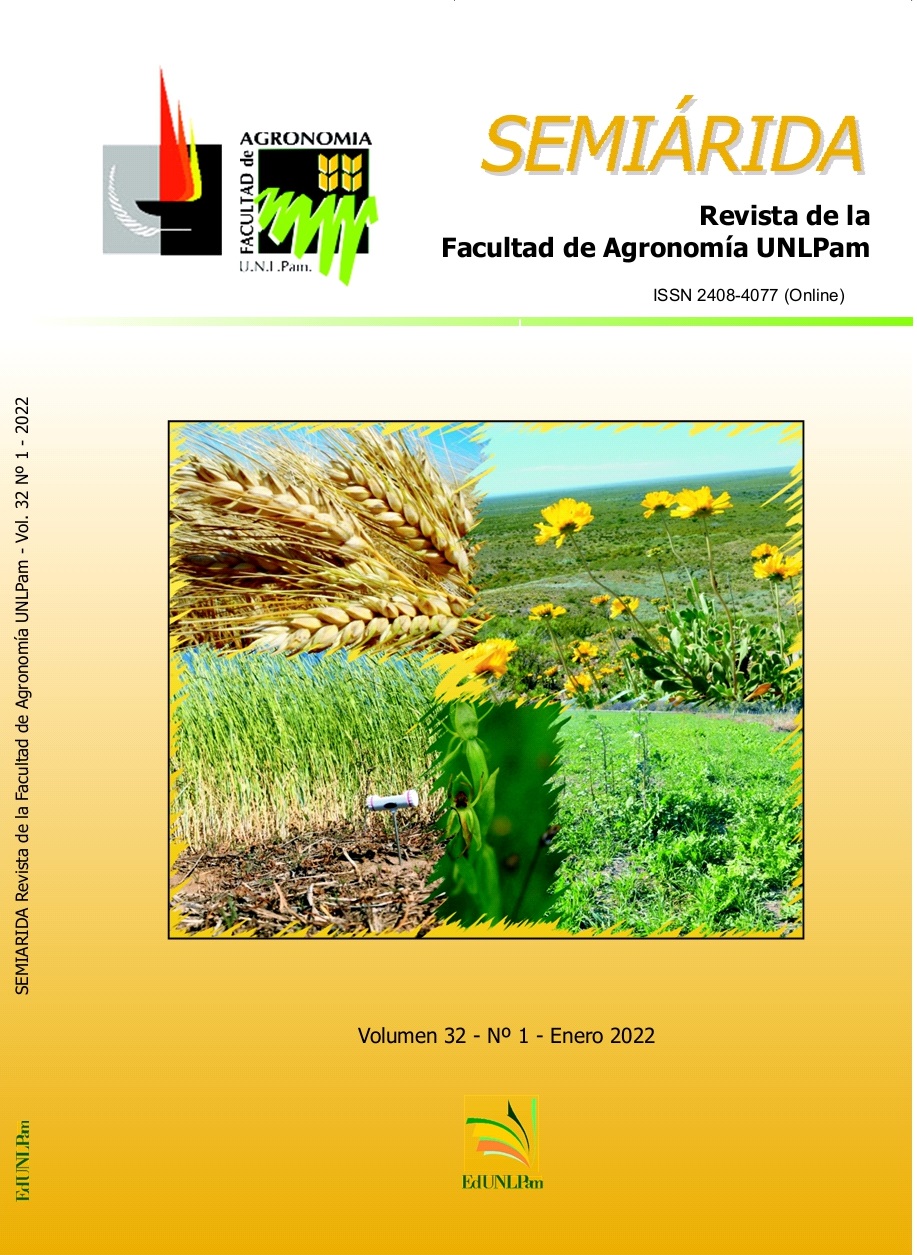El objetivo de este trabajo fue evaluar el efecto de los momentos de secado del cultivo de cobertura (CC) sobre el rendimiento de un maíz tardío, bajo la hipótesis de que a medida que se atrasa la fecha de secado será mayor la captura de carbono (C), menor la cantidad de agua disponible para el cultivo subsiguiente, mayor la cantidad de nitrógeno (N) inmovilizado en la biomasa (mayor relación C/N del CC). Para ello se estableció un ensayo en parcelas
[
ver mas...]
El objetivo de este trabajo fue evaluar el efecto de los momentos de secado del cultivo de cobertura (CC) sobre el rendimiento de un maíz tardío, bajo la hipótesis de que a medida que se atrasa la fecha de secado será mayor la captura de carbono (C), menor la cantidad de agua disponible para el cultivo subsiguiente, mayor la cantidad de nitrógeno (N) inmovilizado en la biomasa (mayor relación C/N del CC). Para ello se estableció un ensayo en parcelas divididas, donde la parcela principal fue la fecha de secado y la secundaria la fertilización nitrogenada. Se establecieron tres fechas de secado: 1ra fecha de secado (julio), 2da fecha de secado (agosto) y 3ra fecha de secado (septiembre), a su vez, cada parcela se dividió a la mitad para establecer tratamientos con y sin fertilización nitrogenada en el cultivo de maíz. Se determinó agua total (AT), producción aérea, carbono y nitrógeno de biomasa aérea (C/N), biomasa de raíces, uso consuntivo (UC), eficiencia de uso del agua (EUA) contenido de nitrógeno de nitratos y rendimiento de maíz. Los resultados obtenidos en el tratamiento 1ra fecha de secado fueron: producción de biomasa aérea del CC de 3015 Kg MS.ha-1, producción de biomasa radicular del CC de 1765 Kg.ha-1, UC de 237 mm, EUA de 12,2 Kg.ha-1.mm-1 y rendimiento de maíz de 6566 Kg.ha-1. Para el tratamiento 2da fecha de secado fueron: producción de biomasa aérea del CC de 5060 Kg MS.ha-1, producción de biomasa radicular del CC de 6352 Kg.ha-1, UC de 260 mm, EUA de 20 Kg.ha-1.mm-1 y rendimiento de maíz de 6450 Kg.ha-1. Por último, para el tratamiento 3ra fecha de secado fueron: producción de biomasa aérea del CC de 8252 Kg MS.ha-1, producción de biomasa radicular del CC de 4000 Kg.ha-1, UC de 347 mm, EUA de 24,2 Kg.ha-1.mm-1 y rendimiento de maíz de 5931 Kg.ha-1. El momento de secado del CC tuvo influencia sobre el rendimiento de maíz en la Región Semiárida Pampeana, ante un régimen de humedad del tipo ústico, propio de dicha región.
[
Cerrar]
In order to evaluate the effect ofwhen we kill the cover crop on the yield of a late corn, under the hypothesis that as the desiccate dateis delayed, it will increase the carbon sequestration the amount of nitrogen (N) immobilized in thebiomass (lower C/N ratio) and weed suppression and it will reduce the water soil storage for the nextcrop. Trials established in completely randomized blocks with four repetitions of the followingtreatments: 1st drying
[
ver mas...]
In order to evaluate the effect ofwhen we kill the cover crop on the yield of a late corn, under the hypothesis that as the desiccate dateis delayed, it will increase the carbon sequestration the amount of nitrogen (N) immobilized in thebiomass (lower C/N ratio) and weed suppression and it will reduce the water soil storage for the nextcrop. Trials established in completely randomized blocks with four repetitions of the followingtreatments: 1st drying date (july), 2nd drying date (august) and 3rd drying date (september), in turn,each plot was divided in half to establish treatments with and without nitrogen fertilization in the corncrop. Total water (AT), aerial production and carbon and nitrogen; root biomass production,consumptive use (UC), water use efficiency (WUE) and nitrogen availability and yield were determined.The results obtained in the treatment of the 1st drying date were: production of air biomass of the CC f 3015 Kg MS.ha-1, production of root biomassof the CC of 1765 Kg.ha-1, UC of 237 mm, USAof 12.2 Kg.ha-1.mm-1and corn yield of 6566Kg.ha-1. For the treatment 2 nd drying date were:production of aerial biomass of the CC of 5060Kg MS.ha-1, production of root biomass of the CC of 6352 Kg.ha-1, UC of 260 mm, USA of 20 Kg.ha-1.mm-1and corn yield of 6450 Kg.ha-1. Finally, for thetreatment of the 3rd date of drying were: production of aerial biomass of the CC of 8252 Kg MS.ha-1,production of root biomass of the CC of 4000 Kg.ha-1, UC of 347 mm, USA of 24.2 Kg.ha-1.mm-1andcorn yield of 5931 Kg.ha-1. The drying time of the CC have an influence on the yield in the PampeanSemi-Arid Region, given a moisture regime of the Utic type, typical of that region
[
Cerrar]

 Excepto donde se diga explicitamente, este item se publica bajo la siguiente descripción: Creative Commons Attribution-NonCommercial-ShareAlike 2.5 Unported (CC BY-NC-SA 2.5)
Excepto donde se diga explicitamente, este item se publica bajo la siguiente descripción: Creative Commons Attribution-NonCommercial-ShareAlike 2.5 Unported (CC BY-NC-SA 2.5)


